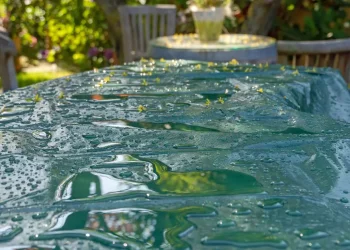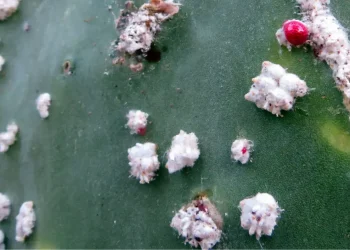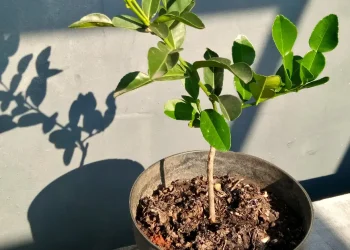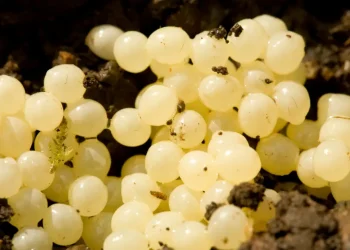Whether sweet or spicy, peppers can come in various sizes and shapes. We’re used to slight variations in their sizes and shapes – not in the grocery store, but if you are a gardener growing fruits and vegetables, one fruit can be enormous, while right his neighbor is really tiny. And some are not even remotely the intended shape. But why do peppers grow deformed?
Deformed or misshapen peppers can be a common issue that can signal that the plant is not in a very favorable environment.
Peppers are resilient plants that can tolerate drought and nearly any temperature higher than 65°F (18°C). But high temperatures can also be one of the reasons why your peppers grow deformed. High fluctuations from the desired temperature affect how thick the walls in the initial growing stages grow, and as a result, they’ll slowly grow misshapen.
But there are a few other things that can cause deformed peppers and that you should focus on.
In this article, I will walk you through all of them, and I promise we will find the answer to why your peppers grow misshapen or deformed.
1. Incomplete Pollination
For most fruit-bearing plants, including peppers, the development of fruits typically depends on successful pollination of their flowers.
Peppers have this huge advantage from nature. Each individual pepper flower contains both the male and female reproductive organs. This means that peppers can self-pollinate.
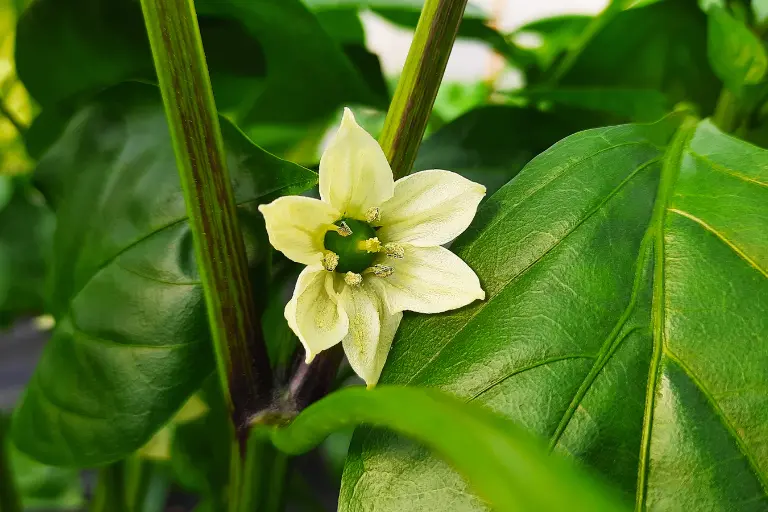
The flowers are receptive to cross-pollination. If that does not happen, the flowers self-pollinate as they are closing.
Self-pollination always happens, but if there’s a pollen shortage inside that pepper flower, it can lead to the deformation of the pepper itself. Additionally, inbreeding (when a plant is self-pollinated instead of cross-pollinated) itself can significantly lower the health of the plant, also leading to deformed fruits.
2. Physical Barriers
Another potential cause of deformed peppers in your garden is the presence of physical barriers that hinder their proper growth.
You can think of it this way. Peppers have their own inherent growth potential, and when obstacles block their path from one or multiple sides, their growth will “overflow” anywhere else, leading to misshapen fruit.
These barriers can include tight planting spacing or overcrowding, which restricts the peppers’ access to sunlight and airflow. This can also extend the time needed for peppers to turn red. When pepper plants are too close together, they often compete for other resources too.
To prevent these physical barriers from affecting the shape and size of your peppers, ensure that each plant has ample space to thrive and receive the necessary light, nutrients, and airflow for uniform growth.
3. Unwelcoming Environment
Environmental factors play a significant role in the development of your pepper plants and their fruit. Whether it’s temperature, humidity, or nutrients in the soil, if these factors are not in the optimal range, the plant languishes. This can lead to stunted growth, slow ripening of peppers, or their deformities.
These are the environmental factors that play the most significant roles in pepper growth:
Temperature is too High or too Low
Peppers are very resilient to temperature. They can tolerate both ends of the spectrum well. But the temperature shouldn’t be too far from the ideal. If it is, it can be a significant factor contributing to their deformities.
Peppers prefer warm temperatures between 70 and 80 degrees F (21 and 26 C). But in general, any temperatures above 65°F (18°C) will do.
When temperatures soar high above what pepper plants can tolerate (over 90°F, or 32°C), it can lead to a condition known as blossom drop, where flowers fall off prematurely, resulting in reduced fruit production or malformed peppers.
On the other hand, chilly temperatures can impede pollination and cause fruit-setting issues. Also, lower temperatures slow down the maturing of the peppers and have also impact on the thickness of the fruit walls. As a result, the fruit is impacted right at the beginning and develops slowly to the deformed form.
To mitigate the impact of temperature extremes, consider using shade cloths during scorching summer days and providing some form of protection or insulation during colder spells.
Humidity
Peppers are very drought-tolerant. You can actually find them in the top spots of the best plants for dry environments. But it’s especially the high humidity that can influence the shape of the fruit and possibly deform it.
High humidity can create a breeding ground for fungal diseases and pests, potentially affecting the health of your plants. Excessive moisture in the air can cause issues like blossom end rot, which results in sunken, disfigured ends on the peppers.
On the other hand, extremely low humidity won’t likely deform the peppers themselves but can lead, together with direct sun, to sunburn and discoloration.
Soil Quality and Inadequate Nutrients
The quality of the soil in which your pepper plants are grown is a fundamental factor that can significantly impact the shape and health of your peppers.
You also wouldn’t do very well on a diet consisting only of pizza and Coke. And the same is true with plants. Plants need a balanced diet of all essential nutrients. Soil lacking essential nutrients can result in nutrient deficiencies, leading to all sorts of problems, from browning through root issues and even irregular fruit development.
Additionally, poor soil drainage can cause waterlogged conditions, in which the roots can’t take the essential nutrients from the soil or oxygen, which are both crucial.
However, low levels of nutrients in the soil are not the only issue. Soil pH levels limit the availability of certain nutrients. In slightly alkaline soils, minerals like calcium or magnesium are easily accessible to plants. But when we flip the scale towards the acidic side, these minerals are essentially locked away, and others become more available, like iron, manganese, and aluminum.
But plants need all nutrients. That’s why most plants do best in slightly acidic soil, and it’s no different for peppers. Peppers do best in soil with a pH between 6.5 and 7.
4. Pests and Diseases
Pests and diseases are common adversaries that can lead to deformed peppers in your garden.
Various insects, such as aphids and pepper weevils, can infest your pepper plants, feeding on the leaves and stems. These pests not only weaken the plants but can also introduce diseases that affect the fruit’s growth and appearance.
There are also pests that can directly contribute to deformed peppers. For instance, pepper weevils or leaf-footed bugs inject toxic enzymes into the plant as they feed, which destroys plant tissue, causing discoloration and possibly fruit deformation.
Also, diseases like bacterial spot or mosaic viruses can cause irregular pigmentation, distortion, and stunted growth in peppers.
In the case of pests and diseases, prevention and frequent inspection of your garden is a key. As soon as something seems off, you should take appropriate measures. Don’t be scared to use pesticides or fungicides right away.
5. Genetic Factors
Some pepper varieties naturally exhibit traits that may result in misshapen fruit. These traits can include characteristics like irregular fruit lobes, unique color patterns, or uneven growth.
Also, plants and fruits have their own set of genes. And from time to time, a mutation in this gene may appear. When this happens, peppers may display unexpected features such as distorted or asymmetric fruit.
Mutations are rather rare, but they also can be a cause of deformed peppers.
This also highly relates to the issue with self-pollination I mentioned earlier. Self-pollination can result in the overall downfall of the plant’s and fruit’s health.
Before you go…
Even though your peppers grew deformed, you probably want them to turn to the juicy and sweet red pepper, right? Gardening is full of surprises, and even the ripening of peppers has its set of guidelines and requirements. Make sure to check out my next article, which will tell you everything you need to know about peppers and their process of turning from green to red. Spoiler alert: there are also some useful tips to encourage peppers to ripen…
Peppers not Turning Red: Expert Provides Causes and Solutions


